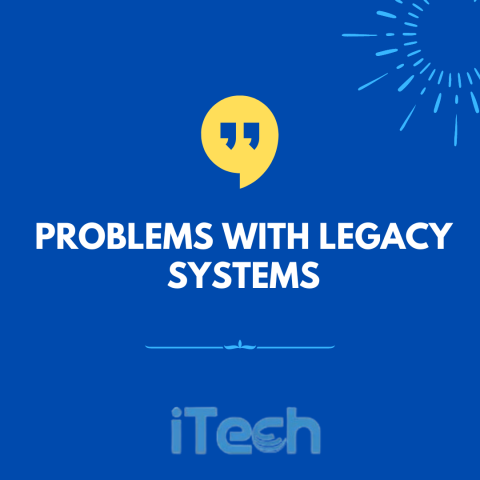Products Catalogs & Keywords:

"Legacy systems often present several challenges and problems for organizations. Here are some common issues associated with legacy systems:
Outdated Technology: Legacy systems typically use outdated technology, programming languages, and infrastructure. This can make it difficult to integrate with modern systems, take advantage of new functionalities, or adopt emerging technologies. The lack of support for newer standards and protocols can hinder system performance, security, and compatibility.
Maintenance and Support Difficulties: Legacy systems require specialized knowledge and expertise to maintain and support. As technology evolves and skilled professionals with knowledge of older technologies become scarce, organizations may struggle to find qualified personnel to handle ongoing maintenance and support. This can result in longer response times, increased downtime, and higher costs for maintaining legacy systems.
Limited Scalability: Legacy systems often lack the flexibility to accommodate increasing data volumes or user loads. They may not scale well to meet growing business demands, leading to performance issues or the need for expensive hardware upgrades. Scaling a legacy system can be challenging due to architectural constraints and dependencies on outdated components.
Security Vulnerabilities: Legacy systems are more susceptible to security vulnerabilities compared to modern systems. They may lack essential security features, have outdated encryption algorithms, or be more prone to software vulnerabilities that can be exploited by attackers. Additionally, legacy systems often don't receive regular security updates or patches, further increasing the security risks.
Integration Challenges: Integrating legacy systems with newer applications or third-party services can be complex and time-consuming. Legacy systems may lack standardized interfaces or APIs, requiring custom development or middleware solutions to establish connectivity. The lack of integration capabilities can impede data sharing, hinder workflow automation, and hinder the overall efficiency of the organization.
High Total Cost of Ownership: The total cost of ownership for legacy systems can be significant over time. Maintaining and supporting outdated technology, dealing with frequent system failures, and implementing workarounds or customizations can add to the expenses. Additionally, the opportunity cost of not being able to leverage modern technology or streamlined processes can impact an organization's competitiveness and growth potential.
Lack of Vendor Support: As technology advances, vendors may discontinue support for legacy systems, making it challenging to obtain patches, updates, or assistance when issues arise. This lack of vendor support can leave organizations vulnerable to security risks, compatibility issues, and difficulties in resolving system problems.
Inflexibility and Limited Adaptability: Legacy systems are often inflexible and difficult to modify. Making changes to the system, adding new features, or accommodating evolving business needs can be time-consuming and costly. The rigid architecture and tightly coupled components of legacy systems can hinder the organization's ability to respond quickly to market changes or innovate effectively.
Addressing the problems associated with legacy systems often involves assessing the system's long-term viability, exploring modernization options, and carefully planning a migration strategy to newer platforms or technologies.
Source URL: - https://itechindia.co/us/blog/what-is-the-real-cost-of-maintaining-legacy-systems/
